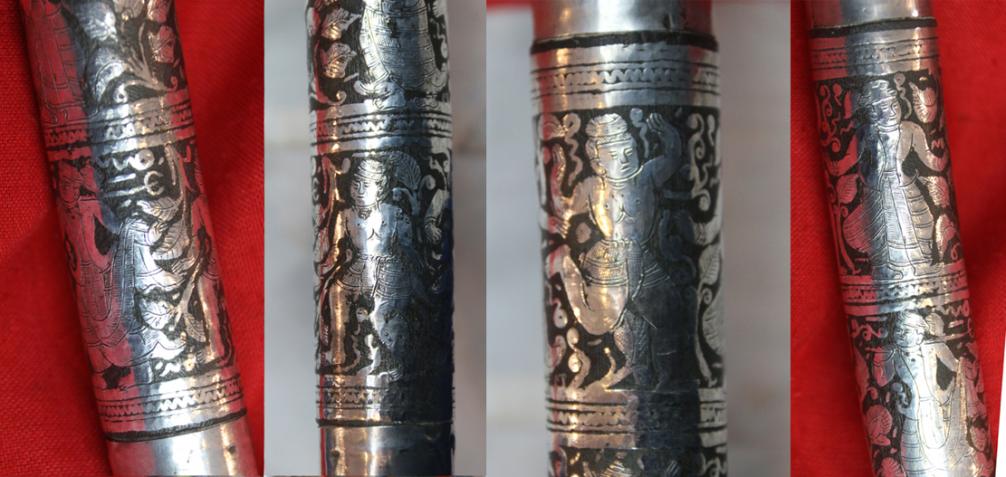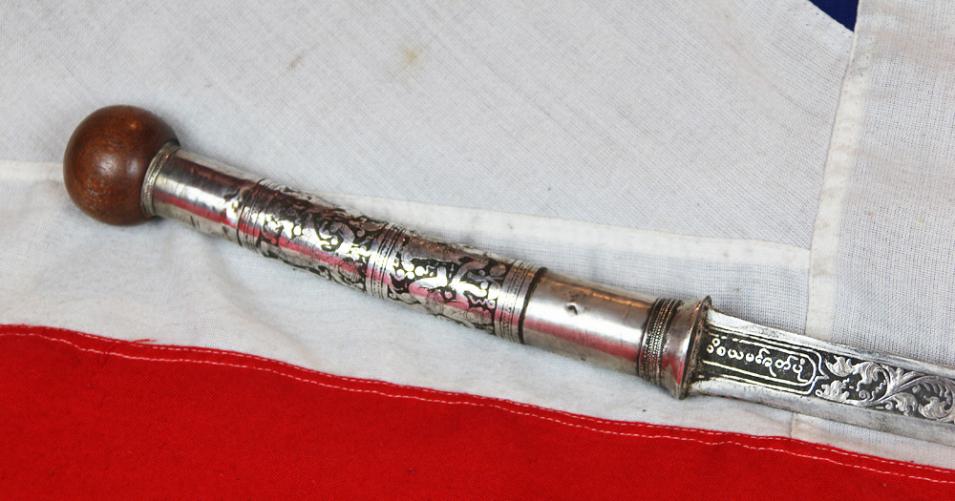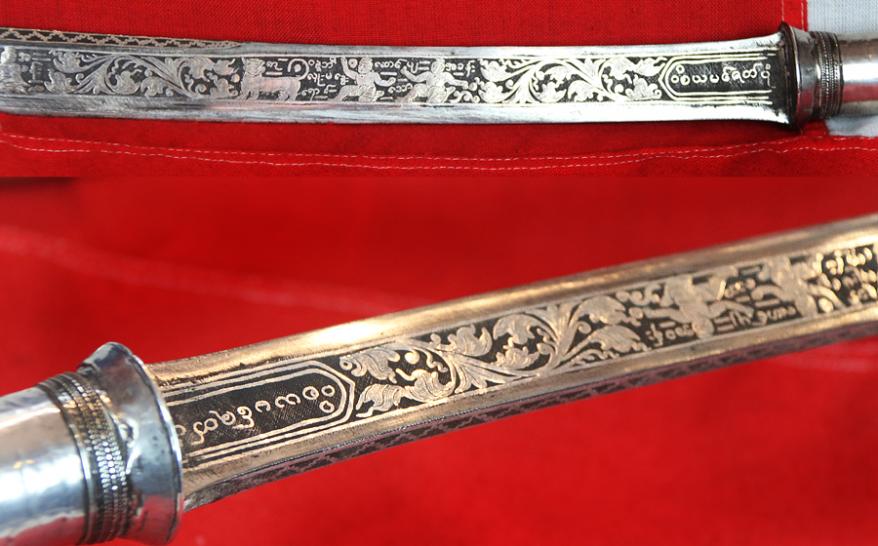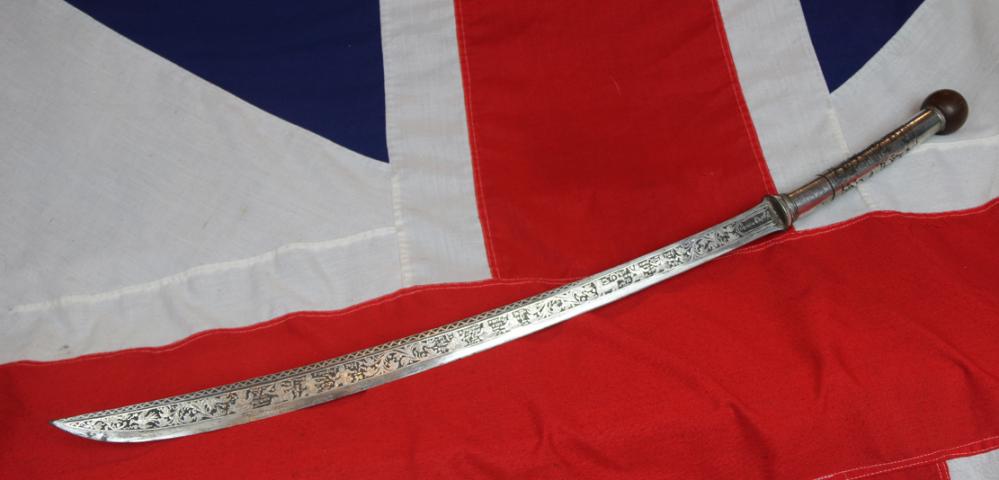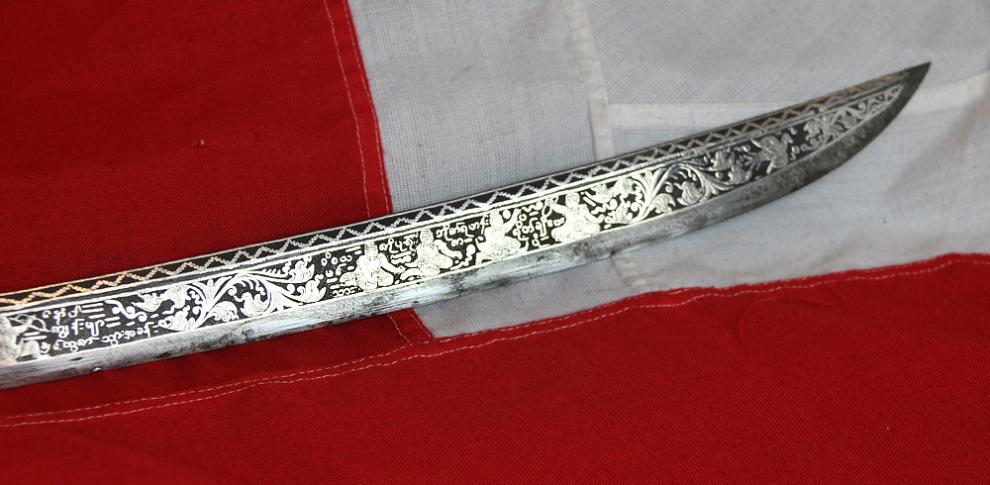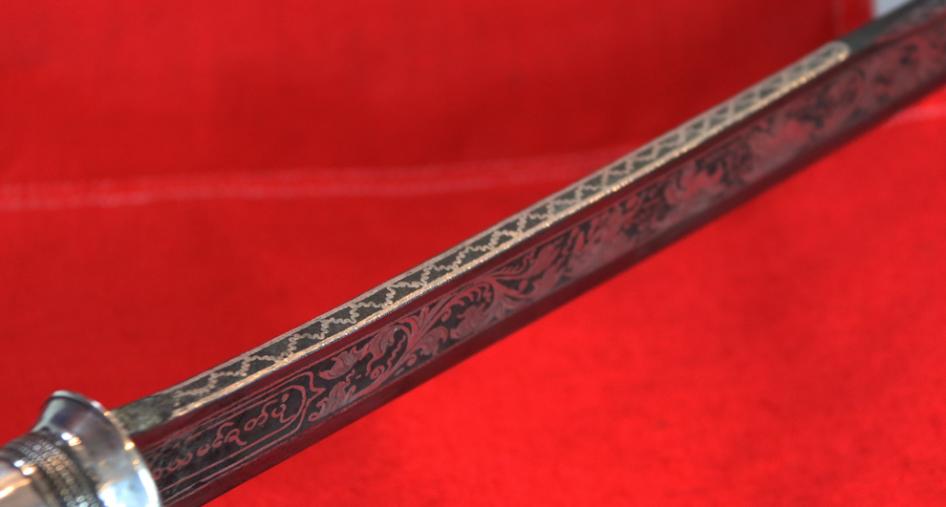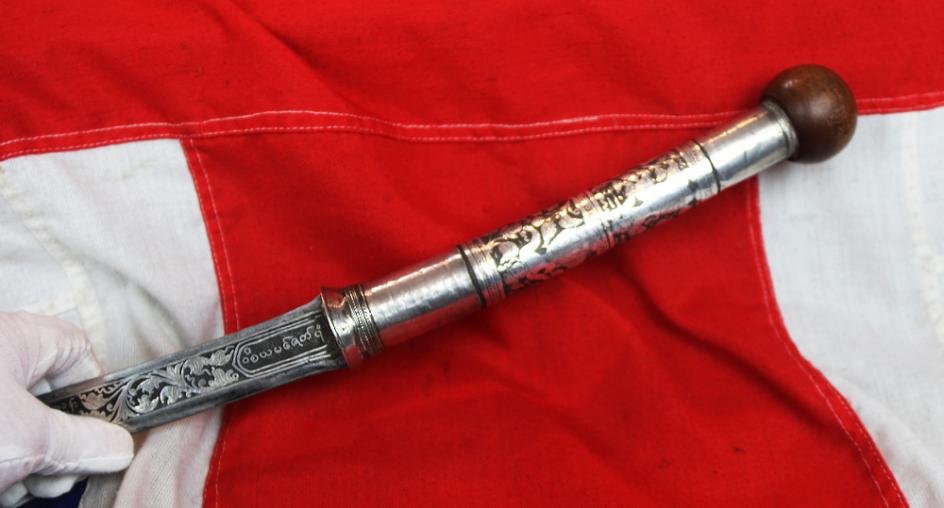A Rare & Beautiful Antique Burmese Silver Decorated Malwe Dha With Finest Silver Inlaid 'Story Blade' Of The Yama Zatdaw, . With Alloy Panelled Scabbard
A 19th Century Burmese sword dha, curved, shallow fullered silver inlaid blade 26", slight swollen towards point, silver damascened for its full length on both sides, with a scene depicting seated warriors and sages, a dog chow, foliage and inscriptions, zig zag panel along the top edge, silver hilt, the central panels depicting figures of male and female deities, plain darkwood ball pommel, in its plain sheet copper- silver alloy panelled scabbard in eleven sections. Circa 1870. Callied a ‘story' dha, the whole sword is superbly decorated. A picture we show in the gallery of a Burmese prince with his similar sword dha on a stand before him. The blade decoration, with silver overlay on both sides, it is said, is sometimes believed to the horoscope of the Burmese nobleman for whom the dha was commissioned. This sword is a “story” dha, the silver onlay illustrate a popular folktale and Jataka legend, complete with vignette scenes of the highlights of the story, and accompanying captions in Burmese or Pali.
Story on blade
The story on this dha blade is that of the Yama Zatdaw, Burma's national epic that is based on the Indian Ramayana. It tells the story of Rama's wife Sita being abducted by the evil king Ravana. Rama and his brother set out to save her.
The broad use and diffusion of the dha across Southeast Asia makes it difficult to attribute a definitive origin, but this is likely from Mindan south of Mandaly.
The Burmese moved into Southeast Asia from the northwest (present day India), passing through Assam and Nagaland. The dha and its variants were possibly derived from the Naga dao, a broadsword used by the Naga people of northeast India for digging as well as killing. The Naga weapon was a thick, heavy, eighteen-inch long backsword with a bevel instead of a point, and this form of blade is found on some dha. Alternatively, the dha may have its origins with the Tai people who migrated to the area from present-day Yunnan Province in southern China. The Khmer and Mon peoples were well established before the arrival the Tai or the Burmese people; perhaps they invented the dha as 13th-century reliefs at Angkor depict the weapon. The history of the region includes many periods where one or the other of these groups dominated, bringing along their culture and weapons to conquered areas.
Similar terms exist in the surrounding area with slightly different meanings. The Chinese word dao (dou in Cantonese) means knife but can refer to any bladed weapon with only one edge. In Bengali, a dao is a six inch long knife. From the Himalayas, the dao spread to Southeast Asia where it came into its present shape. While it is pronounced dha in Burmese, among Khmer-speakers it is known as dao and it may be related to the Malay words pedang and sundang, meaning sword. A related term, dap, means a long-handled sword in Malay. In Thailand, the dha corresponds to the krabi but the equivalent Thai term is daab which is usually a stout double-edge sword. Other elaborate swords might have been made as presentation pieces perhaps to foreigners but the nature of the script on the blade suggests that this example may have been made for a very senior Burman or Shan aristocrat. Overall in scabbard 37.5 inches long, blade 26 inches long
Code: 23315



